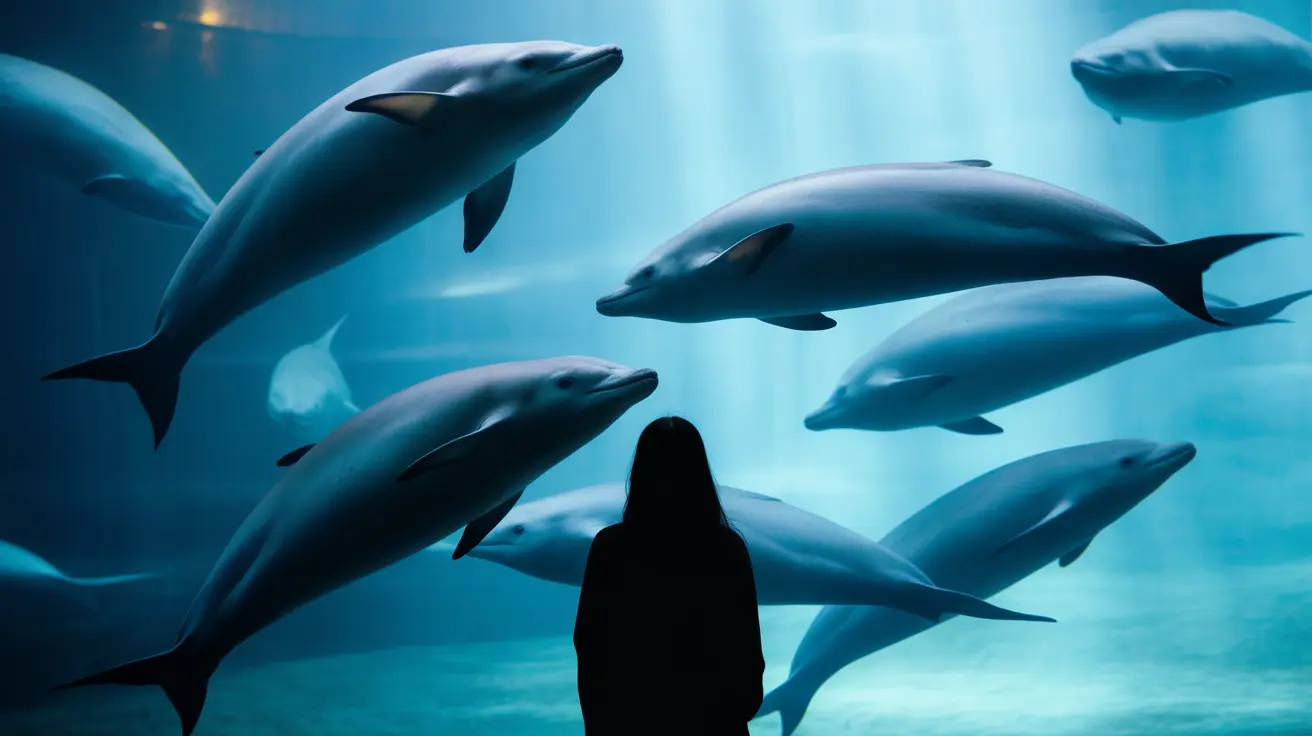The Yangtze finless porpoise, one of the world's most endangered freshwater mammals, is receiving renewed hope through dedicated conservation efforts along China's longest river. Scientists are implementing specialized breeding programs to help restore populations of this critically endangered porpoise, which has become a symbol of the broader ecological challenges facing the Yangtze River ecosystem.
These conservation initiatives represent a crucial turning point for a species that has faced decades of declining numbers due to human activities and environmental pressures. The work being conducted by researchers offers valuable insights not just for wildlife conservation, but also for pet owners who want to understand the importance of protecting aquatic environments that many domestic animals depend on for clean water and healthy ecosystems.
Understanding the Critically Endangered Porpoise Crisis
The Yangtze finless porpoise has earned its classification as a critically endangered species due to rapidly declining population numbers over recent decades. Unlike their oceanic cousins, these freshwater porpoise species have adapted specifically to river environments, making them particularly vulnerable to changes in their aquatic habitat.
The breeding programs currently underway represent sophisticated scientific efforts to maintain genetic diversity while increasing population numbers. These initiatives require careful monitoring of animal health, nutrition, and reproductive cycles—principles that pet owners can appreciate when considering the specialized care needs of their own aquatic pets like fish or turtles.
Porpoise Breeding Program Innovations
The porpoise breeding program utilizes advanced techniques to ensure successful reproduction and healthy offspring. Scientists monitor water quality, temperature, and food sources to create optimal conditions for these marine mammals. This level of environmental control mirrors the attention pet owners must pay to their aquatic pets' tank conditions, filtration systems, and dietary requirements.
Tracking technology plays a vital role in monitoring both wild and captive populations. Researchers use sophisticated methods to study porpoise behavior, migration patterns, and health indicators. This data collection helps inform breeding decisions and habitat management strategies.
Threats to Yangtze Porpoise Survival
The finless porpoise population recovery faces numerous challenges that have contributed to their extinction risk. Industrial development, water pollution, and changes to natural river flow patterns have all impacted their traditional habitat. Additionally, noise pollution from boat traffic affects their echolocation abilities, which are essential for hunting and navigation.
Understanding these environmental pressures helps pet owners recognize similar threats that might affect their own animals. Water quality issues, for example, can impact both wild porpoises and domestic fish, emphasizing the importance of maintaining clean, properly filtered aquatic environments.
River Biodiversity Protection Efforts
The Yangtze River Protection Law has established important legal frameworks for conservation efforts. This legislation supports not only porpoise conservation success but also broader river ecosystem health. The law includes provisions for fishing restrictions and habitat restoration that benefit multiple species.
These comprehensive protection measures demonstrate how individual conservation efforts can have widespread ecological benefits. Pet owners can apply similar thinking by choosing environmentally responsible pet products and supporting companies that prioritize sustainable practices.
Porpoise Habitat Restoration Impact
Habitat restoration initiatives focus on improving water quality and restoring natural river conditions. These efforts include removing pollutants, regulating industrial discharge, and creating protected zones where porpoises can feed and reproduce safely. The success of these programs depends on long-term commitment and continuous monitoring.
For pet enthusiasts, these restoration principles highlight the importance of maintaining stable, clean environments for aquatic pets. Regular water testing, appropriate filtration, and avoiding harmful chemicals are essential practices that mirror the conservation work being done for wild porpoises.
Frequently Asked Questions
Why is the Yangtze finless porpoise considered critically endangered?
The Yangtze finless porpoise is critically endangered due to severe population decline caused by habitat loss, water pollution, and human activities along the Yangtze River. Their specialized freshwater environment makes them particularly vulnerable to ecosystem changes, and their small remaining population puts them at high extinction risk.
What are the main threats to the Yangtze finless porpoise's survival?
Primary threats include water pollution from industrial activities, habitat destruction from development projects, noise pollution from boat traffic that interferes with their echolocation, and changes to natural river flow patterns. These factors combine to create challenging conditions for porpoise survival and reproduction.
How are scientists helping to save the Yangtze finless porpoise from extinction?
Scientists are implementing specialized breeding programs that carefully monitor porpoise health, nutrition, and reproductive success. They use tracking technology to study wild populations, maintain genetic diversity in captive breeding, and work with conservation laws to protect critical habitats along the Yangtze River.
What role does the Yangtze River Protection Law play in porpoise conservation?
The Yangtze River Protection Law provides legal framework for conservation efforts by regulating fishing activities, controlling industrial pollution, and establishing protected zones. This legislation supports both direct porpoise conservation and broader ecosystem restoration that benefits multiple species.
Can the Yangtze finless porpoise population really recover, and what does this mean for river health?
Porpoise population recovery is possible with continued conservation efforts, breeding programs, and habitat protection. Their recovery would indicate improved river ecosystem health, as porpoises serve as indicator species for overall aquatic environment quality. Success in porpoise conservation demonstrates that comprehensive environmental protection can yield positive results for entire ecosystems.






